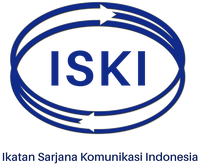RESPON KONSUMEN TERHADAP IKLAN MIE SEDAP
DOI:
https://doi.org/10.31315/jik.v6i1.40Keywords:
advertising strength, customer’ response strength, customer’ response indexAbstract
The aims of the research are identify Mie Sedaap advertising strength, customer’s re- sponse strength, customer’s response index, and relationship between advertising strength and customer’s response strength. Closed questionnaire is use to collect data from 100 respondents. Purposive sampling technique used to determine respondent. Date tabulating is kind of descriptive analysis that is used to analysis advertising strength, customers’ response strength, and customers’ response index. Rank Spearman correlation use to analysis relationship between advertising strength and customers’response strength. The result of descriptive analysis show that strength of Mie Sedaap advertising Titi Kamal Version is in the average category. It means the respondent see the advertising very often but there’s no special thing on the interest build. With the hierarchy effect model, it shows the con- sumer respondent has goes outside awareness, interest, desire, convict, and purchase level. Most of the respondents do the purchase, while some respondent didn’t purchase just because they didn’t get convicted about what the advertising claim and didn’t get interest whit that. Mie Sedaap advertising can be categorized success because most of the people buy the goods. But if we look to the strength of the advertising which created only weak responses, there’s no guaran- tee they will buy again in the future or continuing the purchase. In the other hand, for those who haven’t bought the product, still very small possibility to buy. It is because the weak support from the advertising. The result of correlation analysis also shows relations between strength of the advertising and strength of consumer response is significant on level á = 0.05. If the company wants to get the goal of from the advertising, they have to repair the advertising so it can improve the awareness, interest, desire, conviction and purchase level.
References
Kotler, philip, dan Susanto, A.B., 2000, Manajemen Pemasaran di Indonesia, Salemba Empat, Jakarta.
Simamora, Bilson, 2003, Panduan Riset Perilaku Konsumen, Gramedia Pustaka Utama, Jakarta.
Suhandang, Kustadi, 2005, Periklanan, Manajemen, Kiat, dan Strategi, Penerbit Nuansa, Bandung.
Sutisna, 2002, Perilaku Konsumen dan Komunikasi Pemasaran, Remaja Rosda Karya, Bandung.
Hoeta, 2001, Teori Komunikasi, Erlangga Jakarta
Kasali, Renald, 1992, Manajemen Periklanan Implikasi dan Penerapannya di Indonesia, Erlangga, Jakarta.
Engel, James F., Blackwell, Roger D., dan
Miniart. Paul W. 1995, Perilaku Konsumen, Penterjemah Drs.
F. X. Budiyanto, Cet I, Binarupa Aksara, Ja- karta.
Berkowitz, Eric N.; Kerin, RogerA.; dan Rudelius, William, 1992, Marketing, Richard D Irwin Inc, Boston.
Russ dan Kirkpatrick, 1982, Marketing, Little, Brown and Company, Boston Toronto.
Stanton, William J. ,1991, Fundamentals of Marketing, McGraw-Hill Book Company, New York
Downloads
Published
Issue
Section
License
Authors who publish articles in this journal agree to the following terms:
- Copyright remains with the author and gives rights to the Jurnal Ilmu Komunikasi as the priority to publish the article with an Creative Commons Atribusi 4.0 Internasional License, which allows the article to be shared with acknowledgment of the author of the article and this journal as the place of publication.
- Authors can distribute the publication of their articles on a non-exclusive basis (for example: on university repositories or books) with notification or acknowledgment of publication in the journal Option
- Authors are allowed to post their work online (for example: on personal websites or in university repositories) before and after the submission process (see The Effect of Open Access)
Jurnal Ilmu Komunikasi is licensed under a Creative Commons Atribusi 4.0 Internasional License.









